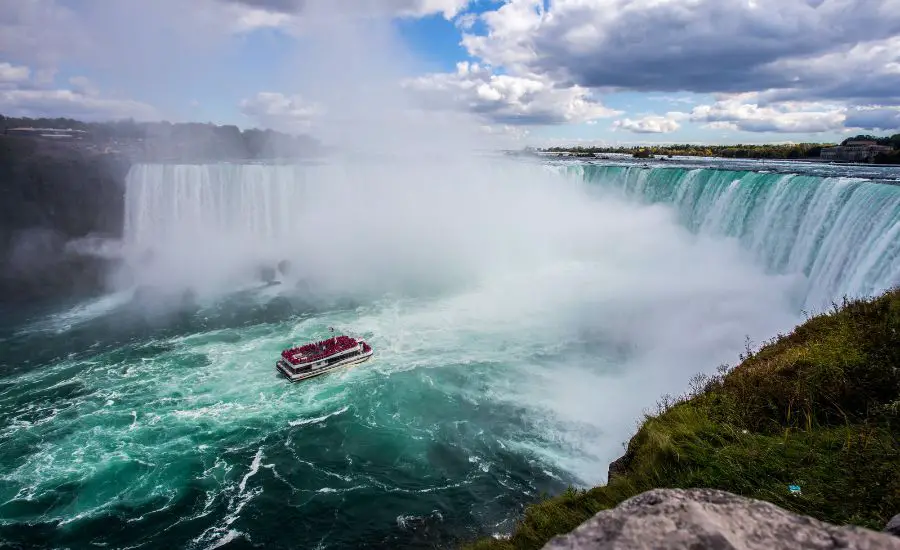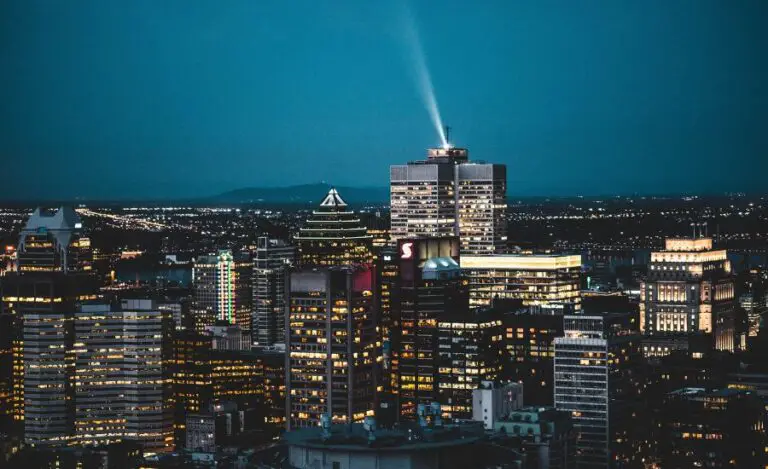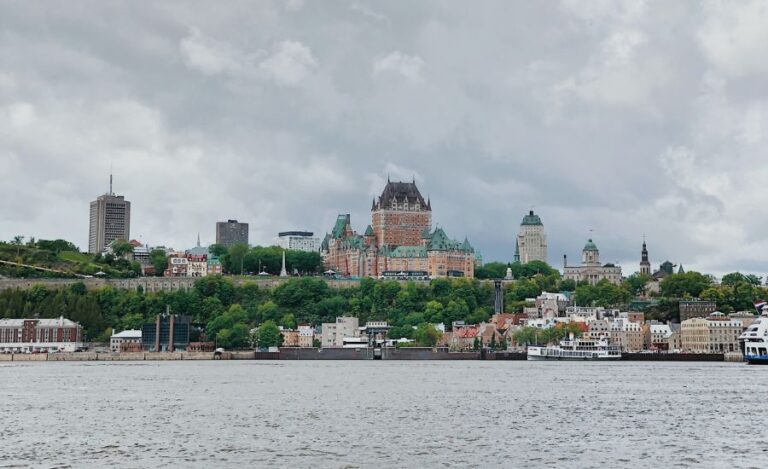9.5+ Interesting Things About Niagara Falls In Canada
Have you ever heard about the Canada side Niagara falls secret that no one talks about?
Niagara Falls, one of the world’s most iconic natural wonders, holds an undeniable allure for travelers worldwide. While the falls are often associated with the United States, the Canadian side offers a host of captivating attractions and unique experiences that should not be overlooked.
In this exploration, we will delve into the fascinating and lesser-known aspects of Niagara Falls in Canada, uncovering the breathtaking beauty, rich history, and diverse offerings that make it a must-visit destination for adventurers and nature enthusiasts alike.
Niagara Falls – An Overview
Niagara Falls is a world-renowned natural wonder located on the border between the United States and Canada. It consists of three distinct waterfalls: the American Falls and Bridal Veil Falls on the American side, and the Horseshoe Falls (also known as the Canadian Falls) on the Canadian side.
The falls were formed around 12,000 years ago during the last Ice Age when glaciers retreated and the Niagara River was created, flowing from the Great Lakes to the Atlantic Ocean.
The most powerful and impressive of the three falls is the Horseshoe Falls, which accounts for about 90% of the total water flow. Niagara Falls serves not only as a breathtaking tourist destination but also as a significant source of hydroelectric power generation, providing electricity for both the United States and Canada.
Visitors from around the world flock to Niagara Falls to witness the sheer beauty and power of the cascading water. Numerous boat tours, observation decks, and hiking trails offer various perspectives of the falls and the surrounding natural beauty of the Niagara Gorge. Whether in the summer with lush greenery or the winter with ice formations, Niagara Falls continues to captivate and inspire awe in all who visit.
12 Interesting Things About Niagara Falls In Canada
1. Formation and Geology
Niagara Falls was formed around 12,000 years ago during the last Ice Age. The falls were created as the glaciers retreated and the Niagara River was formed, flowing from the Great Lakes to the Atlantic Ocean. The force of the flowing water eroded the soft rocks and created the steep cliffs over which the falls now cascade.
2. Three Waterfalls
Niagara Falls is actually composed of three waterfalls: the American Falls, the Bridal Veil Falls, and the Horseshoe Falls. The American Falls and Bridal Veil Falls are located on the American side of the border, while the Horseshoe Falls is situated on the Canadian side. The Horseshoe Falls, shaped like a horseshoe, is the most powerful and largest of the three, accounting for about 90% of the total water flow.
3. Hydroelectric Power Generation
Niagara Falls is not only a breathtaking natural wonder but also a significant source of hydroelectric power. The massive flow of water is harnessed by several power plants on both the American and Canadian sides, generating electricity for millions of people in the region.
4. Daredevils and Stunts
Throughout history, Niagara Falls has attracted daredevils seeking fame and adventure. Some of the most famous stunts include the first person to go over the falls in a barrel and survive—Annie Edson Taylor in 1901—and the tightrope walks of Charles Blondin in the 1800s. Many attempts have ended tragically, leading to strict regulations and penalties for those attempting dangerous stunts.
5. International Border
Niagara Falls serves as a natural border between the United States and Canada. The islands in the river, such as Goat Island and Luna Island, further divide the falls into the American and Canadian sections. Visitors can experience different perspectives of the falls from both sides.
6. Tourism and Attractions
Niagara Falls is one of the most visited tourist destinations in the world. Tourists have the opportunity to take boat tours such as the famous Maid of the Mist, which gets visitors up close to the base of the falls. Observation decks, including the Skylon Tower and the Table Rock Centre, offer stunning views of the falls and surrounding areas.
7. Illumination and Fireworks
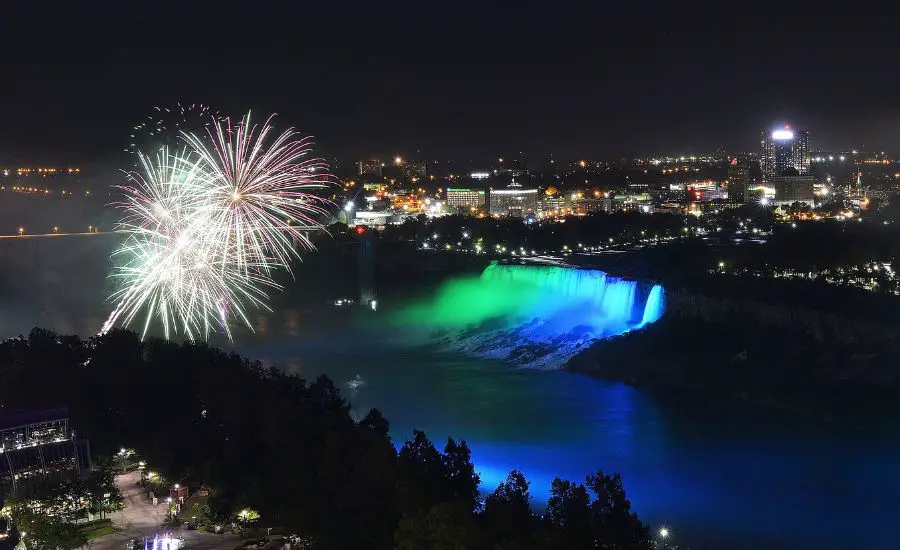
Yes, Niagara Falls is illuminated at night using high-powered LED lights strategically placed on the Canadian side. Additionally, during specific times, fireworks add an extra magical touch to the nighttime spectacle. This tradition began in 1860 with gas-powered lights.
Today, the colourful illumination enhances the falls’ natural beauty and creates a magical atmosphere for visitors.
The lights change colors to mark special occasions and events. The best viewing points are from the Canadian side, such as Queen Victoria Park. The illuminated falls offer a romantic and breathtaking sight, making it popular for couples and photographers.
Overall, the nighttime illumination of Niagara Falls provides a memorable and enchanting experience that adds to the allure of this natural wonder.
8. Winter Wonderland
In winter, the mist from the falls creates spectacular ice formations, coating the surrounding landscape in a sparkling layer of ice. The sight of the partially frozen falls and the ice-covered trees along the banks of the river is a photographer’s dream.
9. Niagara Falls State Park
The American side of Niagara Falls is home to Niagara Falls State Park, the oldest state park in the United States. The park offers various hiking trails, picnic areas, and attractions such as the Cave of the Winds, where visitors can experience the falls up close.
10. Niagara Gorge
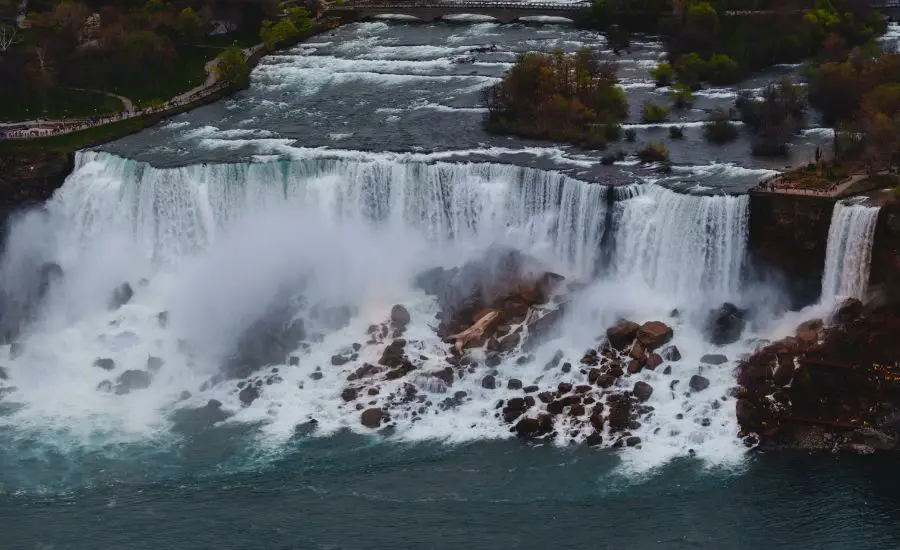
Niagara Gorge is a stunning and geologically significant canyon that stretches downstream from Niagara Falls for about 7 miles (11 kilometers) to the north. Carved out by the erosive force of the Niagara River over thousands of years, the gorge offers visitors a chance to witness the raw power of water shaping the landscape.
Today, the gorge offers visitors a chance to witness the raw power of water shaping the landscape. Well-maintained hiking trails on both the American and Canadian sides allow nature enthusiasts to explore and appreciate its natural beauty.
The gorge showcases exposed layers of rock, ancient marine life evidence, and fascinating geological formations like the Whirlpool. Apart from its geological importance, the gorge provides habitat for various plant and animal species and serves as an outdoor classroom for geologists and environmentalists.
Exploring the Niagara Gorge is an awe-inspiring experience, showcasing the ongoing geological processes that continue to shape our planet.
11. Inspiration for Art and Literature
Niagara Falls has been a source of inspiration for artists, writers, and filmmakers for centuries. Its majestic beauty and awe-inspiring power have been depicted in numerous paintings, poems, and films, making it a symbol of natural wonder and romance.
13. Indigenous Significance
For the Indigenous peoples of the region, including the Haudenosaunee (Iroquois) and the Ongiara (Seneca), Niagara Falls holds deep cultural and spiritual significance. The falls are part of their creation stories and are considered a sacred place.
Are the falls illuminated at night?
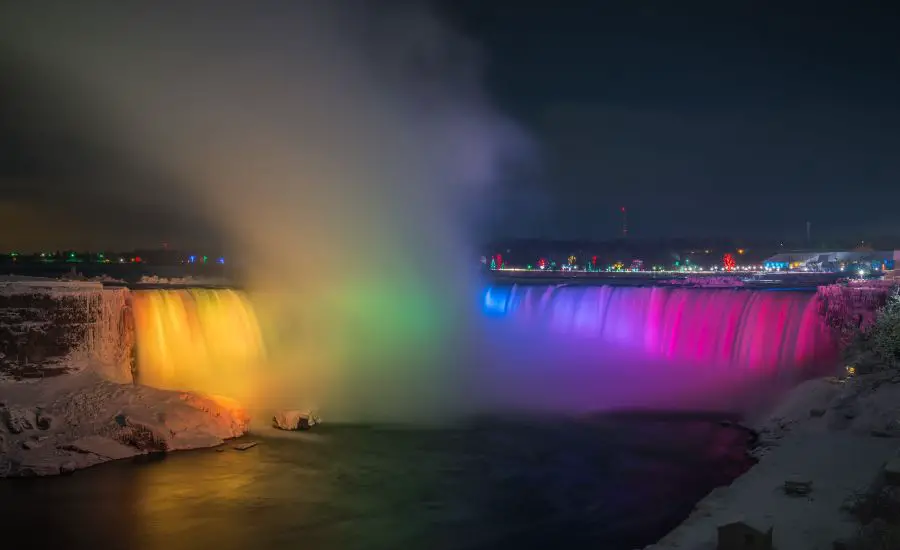
Yes, Niagara Falls is illuminated at night using high-powered LED lights strategically placed on the Canadian side. This tradition began in 1860 with gas-powered lights. Today, the colorful illumination enhances the falls’ natural beauty and creates a magical atmosphere for visitors.
When is the best time to visit Niagara Falls?
The best time to visit Niagara Falls is during the summer months (June to August) when the weather is pleasant, and attractions are fully operational. However, spring (April to May) and fall (September to October) offer milder weather and fewer crowds. Winter (November to March) provides a unique frozen landscape, but some attractions may be closed.
Can you visit Niagara Falls from both the United States and Canada sides?
Yes, Niagara Falls is accessible from both the United States and Canada sides. There are bridges connecting the two countries, and visitors can cross the border with proper documentation, such as a passport or visa.
Are there any boat tours to get close to the falls?
Yes, there are boat tours that take visitors close to the falls. The famous “Maid of the Mist” tour operates from both the U.S. and Canadian sides, providing an up-close experience of the falls’ mist and power. There is also the “Hornblower Niagara Cruises” on the Canadian side, offering a similar experience.
How much time should I allocate for a visit to Niagara Falls?
The amount of time you should allocate depends on your interests and the activities you plan to do. Generally, a day trip is sufficient to see the main attractions and enjoy a boat tour. If you want to explore more of the area or participate in additional activities, consider staying for two or more days.
Are there any hotels with views of Niagara Falls?
Yes, there are several hotels on both the American and Canadian sides that offer stunning views of Niagara Falls. Some hotels have rooms with direct views of the falls, while others have observation decks or restaurants with panoramic views.
Can you walk to the falls from the parking areas or hotels?
Yes, there are walking paths and viewing areas near the falls that are easily accessible from parking lots and hotels. However, the walking distance varies depending on the specific location.
Are there any hiking trails in the area?
Yes, there are hiking trails in the Niagara Falls State Park on the U.S. side and in the Niagara Glen Nature Reserve on the Canadian side. These trails provide opportunities to explore the natural beauty of the area and offer scenic views of the gorge and the river.
Is there an entrance fee to see Niagara Falls?
There is no fee to view Niagara Falls from public areas and viewpoints. However, there may be charges for specific attractions and tours, such as the Maid of the Mist or Journey Behind the Falls experiences.
Are there any kid-friendly activities at Niagara Falls?
Yes, Niagara Falls offers several family-friendly activities, including boat tours, observation decks, and the Butterfly Conservatory. The Niagara Falls State Park also has playgrounds and picnic areas for children to enjoy.

